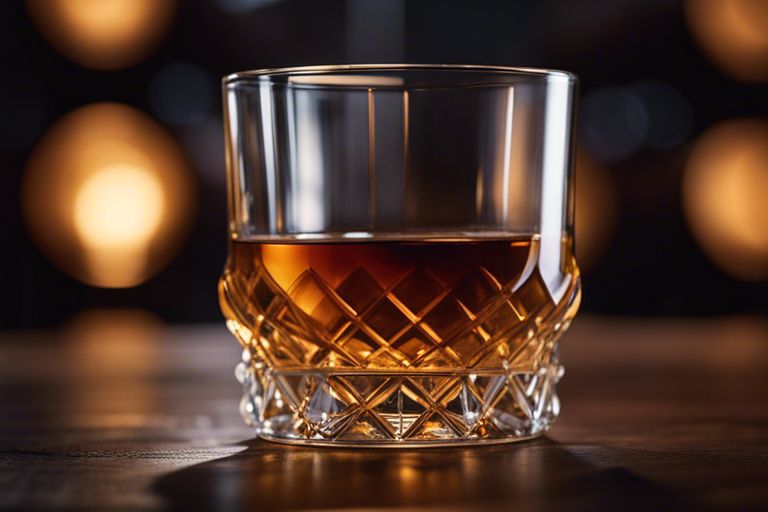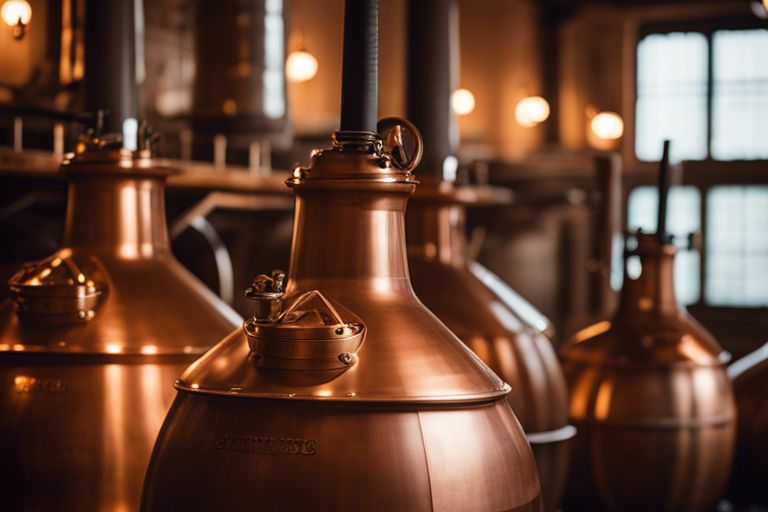Over centuries, single malt Scotch whisky has captured the hearts and palates of spirits connoisseurs worldwide, becoming a symbol of refinement and craftsmanship. Its exceptional quality emanates from a combination of traditional methods, including distillation in copper pot stills, aging in oak barrels, and Scotland’s unique climate, which all contribute to its complex flavors and rich history. This blog post investigates into the key factors that make single malt Scotch whisky so special and highly coveted among enthusiasts.
Key Takeaways:
- Traditional Production Process: Single malt Scotch whisky is made from malted barley, water, and yeast, and is distilled and matured in oak casks according to traditional methods.
- Distinctive Flavor Profile: Due to factors like peatiness, water source, shape of the pot stills, and aging process, single malt Scotch whisky offers a wide range of unique flavors and aromas.
- Terroir Influence: The geographical location where the barley is grown, the specific water source used, and the climate of the distillery all contribute to the distinctive terroir influence found in single malt Scotch whisky.
- Prestigious Craftsmanship: Single malt Scotch whisky is often associated with craftsmanship and expertise, as it requires skill and patience to produce high-quality whisky through each stage of production.
- Collectibility and Rarity: Limited production, lengthy maturation periods, and the unique characteristics of single malt Scotch whiskies make them highly sought-after by collectors and connoisseurs worldwide.
The Craftsmanship Behind Single Malt Scotch
One of the key factors that make Single Malt Scotch whisky so special and sought-after is the meticulous craftsmanship that goes into its production. From the carefully selected ingredients to the traditional distillation methods, every step of the whisky-making process is carried out with precision and expertise.
The importance of ingredients
Importance is placed on the quality of ingredients used in the production of Single Malt Scotch whisky. The combination of water, malted barley, and yeast is crucial to the flavor profile and character of the final product. Scottish distilleries often source their barley locally, ensuring that only the finest grains are used in the production process.
To maintain the integrity of the final product, distilleries adhere to traditional distillation methods that have been passed down through generations. The use of copper pot stills, for example, is common practice in the production of Single Malt Scotch whisky, as they help to remove impurities and create a smooth, refined spirit.
Traditional distillation methods
To create Single Malt Scotch whisky, the distillation process typically involves two rounds of distillation in pot stills. The first distillation, known as the wash still, separates alcohol from the fermented liquid, while the second distillation, in the spirit still, refines the spirit further, producing a clearer and more nuanced whisky.
Unique Geographical Influences
Assuming you are a whisky enthusiast, you must have wondered what makes single malt Scotch whisky so special and sought-after. One of the key factors that contribute to the uniqueness of Scotch whisky is the geographical influences that shape its production and flavor profile. From regional variations to the role of climate and terroir, Scotch whisky captures the essence of Scotland’s diverse landscapes.
Regional variations in Scotland
Geographical influences play a critical role in shaping the distinct flavor profiles of Scotch whisky. Scotland can be divided into several whisky-producing regions, each with its own unique characteristics. For instance, the peaty and smoky flavors associated with Islay malts are a result of the island’s abundant peat bogs, which impart a distinctive smokiness to the whisky. In contrast, Speyside malts are known for their sweet and fruity notes, influenced by the region’s fertile soil and proximity to the River Spey.
In addition to Islay and Speyside, regions like the Highlands, Lowlands, and Islands each contribute to the diversity of Scotch whisky through their specific geographical features. The rugged terrain of the Highlands and the maritime influences of the Islands all leave their mark on the whiskies produced in these regions, making each dram a unique reflection of its place of origin.
The role of climate and terroir
The climate and terroir of Scotland play a crucial role in shaping the character of single malt Scotch whisky. The cool, damp climate of Scotland promotes slow maturation in oak barrels, allowing the whisky to develop complex flavors over time. The variations in temperature between summer and winter also contribute to the interaction between the spirit and the wood, leading to a rich and well-rounded profile.
Terroir, a term often associated with winemaking, is equally important in whisky production. The soil, water source, and microclimate of a distillery’s surroundings all influence the raw ingredients used in whisky production, ultimately affecting the flavor and quality of the final product. Each distillery’s unique terroir contributes to the individuality of their whiskies, creating a diverse and fascinating landscape of flavors for whisky lovers to explore.
The Maturation Process
Aging and its impact on flavor
To truly appreciate the complexity and depth of flavor in single malt Scotch whisky, one must understand the critical role of aging. As whisky matures in oak barrels, it undergoes a transformation that significantly influences its taste profile. The interaction between the spirit and the wood over time results in a plethora of flavors and aromas that contribute to the unique character of each whisky.
As whisky ages, it absorbs compounds from the oak such as vanillin, tannins, and lignin, which impart flavors of vanilla, spices, and woodiness to the spirit. The longer the maturation period, the more pronounced these flavors become, adding layers of richness and complexity to the whisky. Additionally, the porous nature of oak allows for evaporation and oxidation, leading to concentration of flavors and the development of nuanced characteristics.
The significance of oak barrels
Impact on the flavor profile of whisky. Oak barrels are integral to the maturation process of single malt Scotch whisky, playing a crucial role in shaping its final taste. The quality and previous use of the barrels can greatly influence the flavor development, with ex-bourbon barrels being a popular choice due to their ability to impart sweetness and smoothness to the whisky.
This interaction between the oak and the whisky is vital in enhancing the complexity and balance of the final product. The tight grain of oak wood allows for slow oxygenation and mellowing of the spirit, resulting in a harmonious blend of flavors that can range from fruity and floral notes to hints of spice and oak. The choice of oak barrels is a meticulous process that distilleries undertake to achieve the desired flavor profile for their single malt Scotch whisky.

The Culture and Heritage
Once again, let’s investigate into what makes single malt Scotch whisky so special and sought-after. Beyond its fine taste and intricate distillation process, the culture and heritage that surrounds this iconic spirit adds layers of richness and depth to its allure.
Historical significance
Any exploration of single malt Scotch whisky’s appeal would be incomplete without acknowledging its historical significance. Dating back centuries, the traditions and techniques used in crafting this spirit have been passed down through generations, creating a legacy of craftsmanship and excellence. The rich tapestry of Scottish history is interwoven with the story of whisky, making it not just a drink but a symbol of cultural heritage.
Furthermore, the geographical indications and strict regulations governing the production of single malt Scotch whisky add to its prestige. Protected by law, the authenticity and provenance of each bottle are assured, giving connoisseurs the confidence that they are experiencing a product steeped in tradition and integrity.
Modern perception and consumption trends
Trends in modern perception and consumption of single malt Scotch whisky have evolved significantly in recent years. No longer seen as a drink reserved for older generations or special occasions, whisky has become increasingly popular among a diverse range of consumers, including millennials and women. The rise of whisky bars, tasting events, and online whisky communities has created a vibrant and dynamic whisky culture that is inclusive and welcoming.
Plus, the trend towards premiumization has led to a growing demand for high-quality and limited-edition single malts. Whisky enthusiasts are seeking out unique expressions, aged statements, and experimental cask finishes, driving innovation and creativity within the industry. As a result, the market for single malt Scotch whisky continues to expand, attracting new audiences and redefining the perception of this age-old spirit.
To wrap up
Taking this into account, single malt Scotch whisky’s distinct production process, regional variations, aging requirements, and unique flavor profiles all contribute to its unmatched reputation and desirability among whisky enthusiasts worldwide. The meticulous craftsmanship involved in creating each bottle, along with the rich history and tradition encapsulated in every sip, make single malt Scotch whisky a truly special and sought-after spirit for connoisseurs and collectors alike.
FAQ
Q: What makes single malt scotch whisky unique?
A: Single malt scotch whisky is made from 100% malted barley in a single distillery in Scotland. This gives it a distinct flavor profile that reflects the terroir, water source, and production techniques of that specific distillery.
Q: Why is single malt scotch whisky sought-after by whisky enthusiasts?
A: Single malt scotch whisky is sought-after for its complexity, depth of flavor, and aging potential. The craftsmanship and tradition behind its production also contribute to its appeal among whisky connoisseurs.
Q: What factors contribute to the special quality of single malt scotch whisky?
A: Factors such as the use of traditional pot stills, aging in oak barrels, and adherence to strict production regulations set by the Scotch Whisky Association are key to the exceptional quality of single malt scotch whisky. The influence of climate, maturation period, and cask types also play a crucial role in shaping its character.
